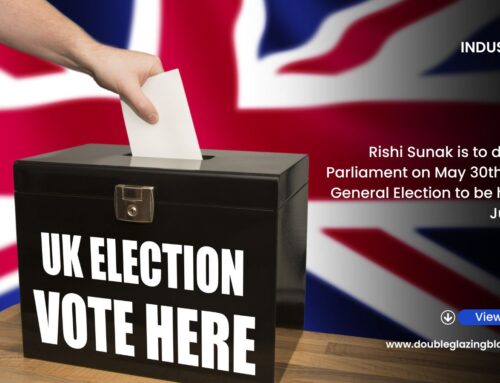The implementation of the new Building Regulations was perhaps the biggest talking point of 2022. In particular, the introduction of trickle vents to every window installation.
There are few topics that stir the emotions of our like trickle vents. Considering the vast array of more serious problems we have to deal with I always find very odd but it is what it is.
I wanted to explore my own thoughts and opinions six months on after the biggest set of changes to the regulations in years.
Trickle vents for all
I began having conversations with my own clients a few months before the new regulations became law. Such was our lead time, orders placed in March were going to be fit in June so would have required to be sold with vents back then.
The way we handled it was simple. We explained the new rules to each client, the wisdom behind them in the eyes of the Government (which is very debatable) and that all our windows would be coming with them. Not a single one of our clients became animated over the issue. That’s not to say they were instant fans of the new rules either. But in our experience, it made very little difference in the decision to use us. The long and short of it was we didn’t make too big a deal of it and so it never became an issue for us.
What we have begun to find, with the consumers who are a bit more aware of Building Regulations, is that requests for vents have actually gone up. Whether that is down to the mere knowledge of the new rules and so they are being asked for because they know they need them, or whether it is for specific ventilation reasons, I am not sure. But what I do know is that knowledge of the new rules is becoming more widespread, therefore resistance to trickle vents is becoming less strong.
I am speaking here from my own experience and the experience of our company. I read on various Facebook forums and groups where installers report different things. For me, it does come down to how you approach it with the customer. Whether you like the new rules or not, and whether you like trickle vents or not, is kind of pointless. The rules are the rules, so if you approach them in a negative way with the client, the client is going to lean into that negativity and rail against them as well. If you come at it from a practical point of view, as we have tried to do here, then you should meet a lot less resistance.
And what are the alternatives? Fitting mechanical ventilation systems in every room to be able to rid yourself of putting trickle vents in windows is very expensive, where few installers will have the technical knowledge to do so, and where homeowners will likely not want to undertake extra work just to avoid a vent in the head of the window. The other option, which I still have doubts about the validity of, is to report to your installer scheme that you have only replaced 30% or less of the windows. On a full house replacement, that would mean registering a job multiple times just to avoid installing trickle vents. That’s a lot of extra admin.
Energy ratings
One of the other major changes in June 2022 was the lowering of minimum U-Values to 1.4. This was a 0.2 decrease from previous regulations. Although a major revision, many window products were already compliant to this level, so they caused minimal disruption in this particular area.
What is perhaps more pressing though are the expected changes in 2025 where we will likely see new minimum U-Values of 0.8. That represents a very steep drop from where we are right now. To achieve 0.8 a lot of products are going to need a lot of improvements, and that takes time. Years in fact. Preparations for those changes really need to be happening right now. The research and development time for new products is about 2-3 years if all goes well. I imagine systems companies and glass companies are already looking at what they need to do to be able to achieve these potential new minimum requirements.
The other fact of energy ratings, which I believe still has to be addressed, are official energy ratings. It’s impossible to think that adding a trickle vent to a window would not affect the overall energy rating of a window. Even when closed, a vent will still impact the overall energy rating even by a small degree. As I understand it, current testing processes exclude the use of vents or at least assume that a vent would be fitted into an add-on to the head of the window. That is disingenuous and the testing process really has to be altered to reflect the new regulations. Most vents will be fitted into sashes or outer frames, therefore the performance will be altered to some degree.
I know there has been some concern voiced over this, with current energy labels likely not representing the true energy performance of the product since the Building Regulation changes. I am not aware of any upcoming changes to the testing method of windows, but if there are not, there should be.
Overall, I have not experienced any major disruptions to our business or interactions with our clients over these rules. The odd groan about the products but certainly nothing that has put the client off from dealing with us. 2023 should be a year where we all crack on with the work at hand and keep our focus on productive and profitable activities.
To get weekly updates from DGB sent to your inbox, enter your email address in the space below to subscribe:
By subscribing you agree to DGB sending you weekly email updates with all published content on this website, as well as any major updates to the services being run on DGB. Your data is never passed on to third parties or used by external advertising companies. Your data is protected and stored on secure servers run by Fivenines UK Ltd.







Your point regarding the integrity of the energy ratings is absolutely correct. We are being dishonest with the consumer and eventually this will come back to us. We have warned anyone who will listen (mostly reputable, concerned installers). It is sad that the Government department responsible for this situation are not interested and the Self-regulatory organisations just shrug their shoulders.
The proper approach is education. trickle vent have their place but not in every room compromising energy efficiency.